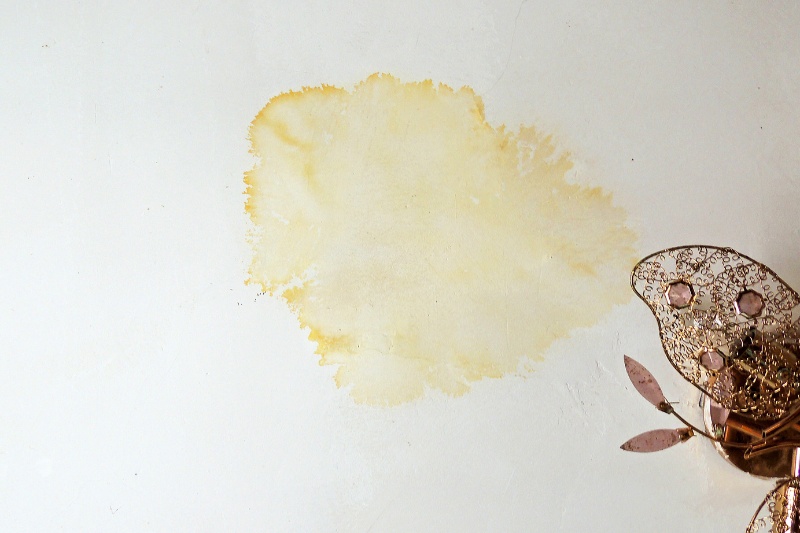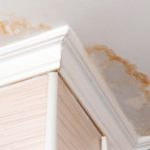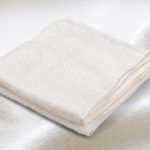Yellow ceiling stains are a common issue that can quickly diminish the overall appearance of a room.
When you first discover a yellow stain on your ceiling, it’s tempting to search for a quick fix to cover it. However, it is imperative to find the cause of the stain first. This ensures you treat the root of the problem and cover up the stain properly without the risk of it occurring again.
Yellow ceiling stains have various causes, including water leaks, smoke, and humidity.
In this guide, we look at each of these causes in detail and provide practical solutions to help tackle whatever issue you face. You’ll be able to restore the beauty of your living space in no time!
What Causes Yellow Stains on Ceilings?
Yellow stains on a ceiling can result from various sources, each requiring a specific approach for removal and prevention. Below are the four most common culprits:
1. Water leaks and water damage
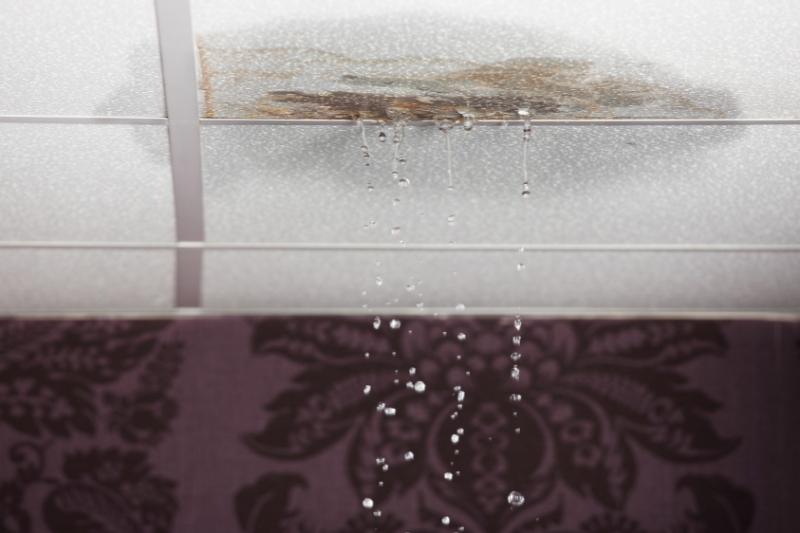
As with brown ceiling stains, yellow ceiling stains commonly stem from water damage.
The accumulated moisture weakens and darkens the material, resulting in a yellowish-brown hue, often with a distinct border, particularly noticeable on lighter surfaces.
This occurs when water overflows from pipes, infiltrates from the house’s exterior, or seeps down from bathrooms located directly above the ceiling.
Leaky roofs or poorly insulated attics can also lead to these stains. Put simply, if water finds any route into your ceiling, it will cause unsightly yellow stains sooner or later.
2. Smoking inside the home

Just as cigarettes can stain a smoker’s teeth a yellow-brown colour, cigarette smoke can also stain any walls, ceilings, or other surfaces that soak up the smoke.
If you smoke inside your home, the smoke particles settle on the ceiling, leaving a noticeable discolouration behind.
It is possible to identify whether a yellow ceiling stain results from smoke by its appearance. Unlike water stains, smoke stains often don’t have identifiable edges.
They cause a stain to look like a wide layer of yellow or brown dust spread across your ceiling, with slightly more concentrated colour above any usual smoking areas.
Alongside their appearance, nicotine stains often give off a stale smell.
3. Humidity and poor ventilation
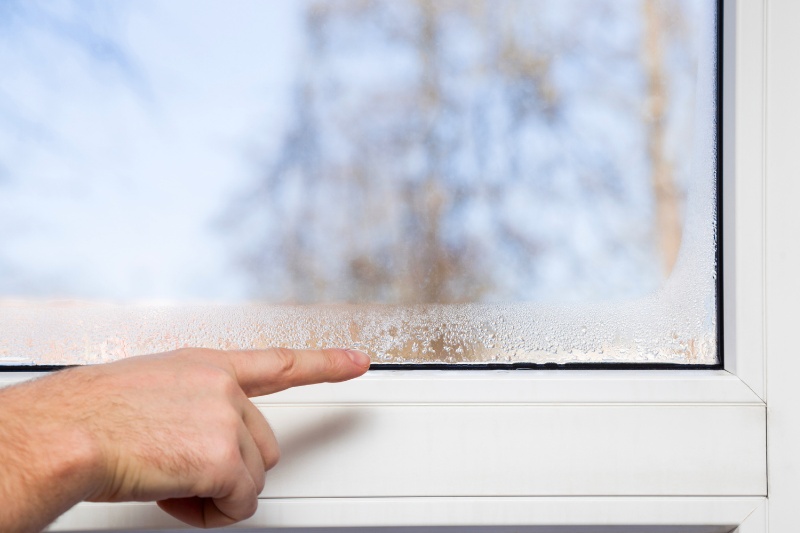
High humidity levels (usually due to poor ventilation in a room) can cause moisture to accumulate on the ceiling.
For example, the air tends to become stagnant when windows are closed in the winter for extended periods or when air conditioning blasts on hot summer days.
This is because warm air rises within a house and exits through vents at higher levels, like upper floors.
The colder, denser outside air from outside replaces the warm indoor air, resulting in a lack of fresh outside air circulation inside your home.
Water droplets are heavier than other air particles and tend to accumulate primarily on cool surfaces, such as ceilings.
Over time, this can lead to yellow stains forming. Eventually, the droplets are either washed away by rain or trickle down walls into sinks or drains below them.
As a result, yellow stains are formed on the ceiling from where this water has run.
4. Mould and mildew
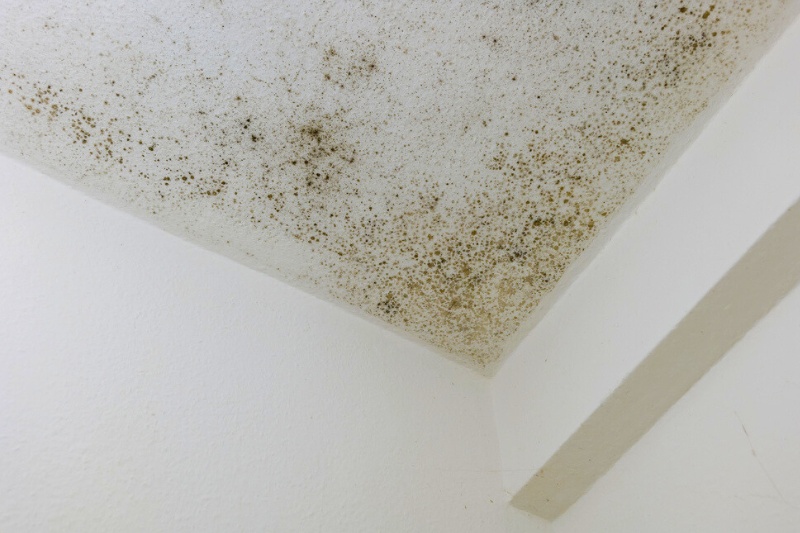
In a room with excess moisture, mould and mildew will grow as fungi thrive in warm and damp environments.
Over time, this can cause yellow stains on a ceiling. However, mould stains are not always yellow—they can also appear brown, black or even green. The unusual shape, as opposed to the colour, makes mould stains identifiable.
Aside from the aesthetic issues that having mould on your ceiling can bring, mould can cause various respiratory problems.
Therefore, it is essential to address any moisture issues and take the steps necessary to remove the mould in the environment as soon as possible.
How Do You Remove Yellow Ceiling Stains?
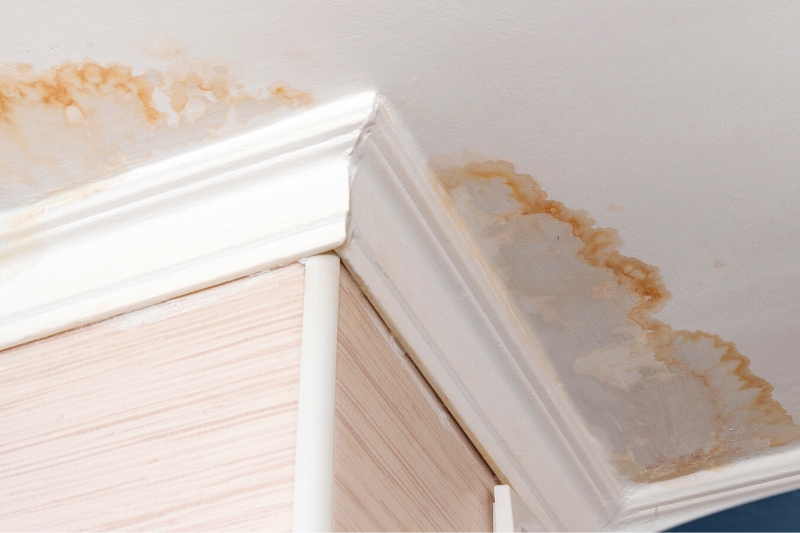
Whilst the easy option of merely covering up yellow spots on your ceiling can be tempting, the only way to altogether remove your ceilings of stains is to address any underlying issues.
We suggest you work through these steps to help identify the problem and rectify it effectively:
1. Identify the cause of the stain
To solve your ceiling issues, you must identify the cause of the stain—is it caused by water, smoke, or mould?
Here’s a quick summary of each stain type, so see which you think applies:
- Water stains are misshapen yellow patches, often near bathrooms or pipes.
- Mould stains are more dappled and can take on green/black/brown tones.
- Smoke stains cover larger areas and are most concentrated in areas where smokers sit.
Stains caused by smoke are easiest to stop at the root. Simply stop smoking inside your home and make an effort to go outside each time you light a cigarette.
For mould stains, your best bet is to improve ventilation in your home. Make sure you have extractor fans in the kitchen and bathroom, keep windows throughout the house open ajar, and consider purchasing a dehumidifier.
Small actions such as wiping down showers with a squeegee after use can also help reduce mould growth.
For water damage, things are a little more complex. See Step 2 below for more help with this issue.
2. Address the water leaks and water damage (if applicable)
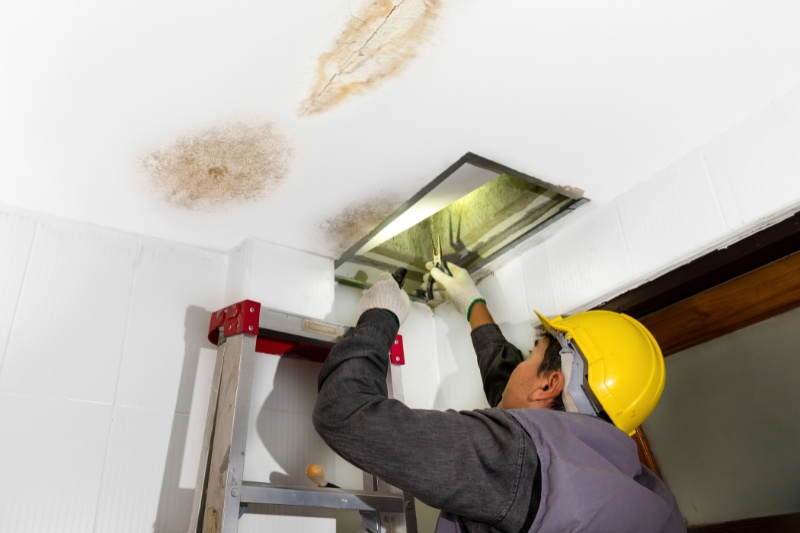
If you think you’re dealing with a water stain, your next job is to identify where the leak is coming from.
Generally speaking, if a leak worsens even in dry weather, there is a plumbing problem. However, if the leak only worsens in rainy conditions, you’re more likely to have a leaky roof.
Depending on the source of the leak, stopping it may involve repairing plumbing, roofs, gutters, or any other areas contributing to the water intrusion.
If you decide to fix any plumbing issues yourself, you must shut down the water in your home, locate the problem causing the leak, and repair it.
Hiring a professional plumber to address the leak effectively may be necessary.
Once the leak has been addressed, thoroughly dry the affected stained area before attempting to remove the stain from the ceiling.
2. Tackle the yellow ceiling stain
Before repainting your ceiling, it is essential to clean it first. Brush away any dust or cobwebs, then use an appropriate cleaning solution to tackle the stain:
- Water damage: It is best to use either white vinegar or a bleach solution for yellow ceiling stains caused by water damage. Apply either of these products to the ceiling using a cloth, leave it to sit for around ten minutes, and then rinse the area with a sponge to remove any cleaning agent residue.
- Smoke or nicotine: A thorough cleaning is essential for stains caused by smoke or nicotine. Mix warm water and mild washing-up liquid to create a cleaning solution. Use a sponge or soft cloth to clean the stained area gently. If the stains persist, try a specialist stain remover or a mixture of bicarbonate of soda and vinegar.
- Mould and mildew: If the cause of your yellow ceiling stain is mould or mildew, you will have to use a product specifically designed to eliminate mould. These products are readily available at most hardware stores. Ensure to carefully follow the instructions provided on the label, as certain products may require wearing gloves and a mask during application.
3. Repaint and repair your ceiling
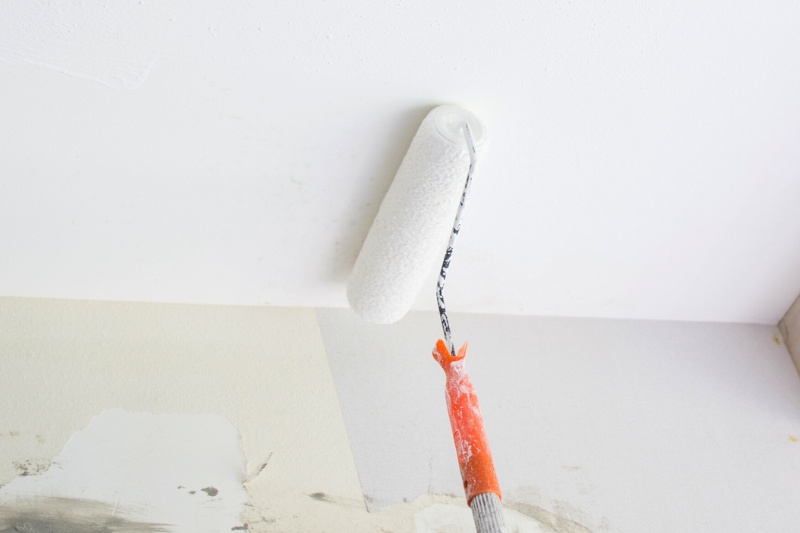
Once the ceiling has completely dried, apply a primer to provide a base layer for your paint. Oil-based primers (such as Zinsser) are our preferred option.
They contain products that help block stains, preventing future mould buildup and enhancing the paint application process.
After the primer has dried, paint the ceiling in your chosen colour. And after your first coat has dried, do a second coat if necessary. Your ceiling should now be as good as new!
4. Seek professional help
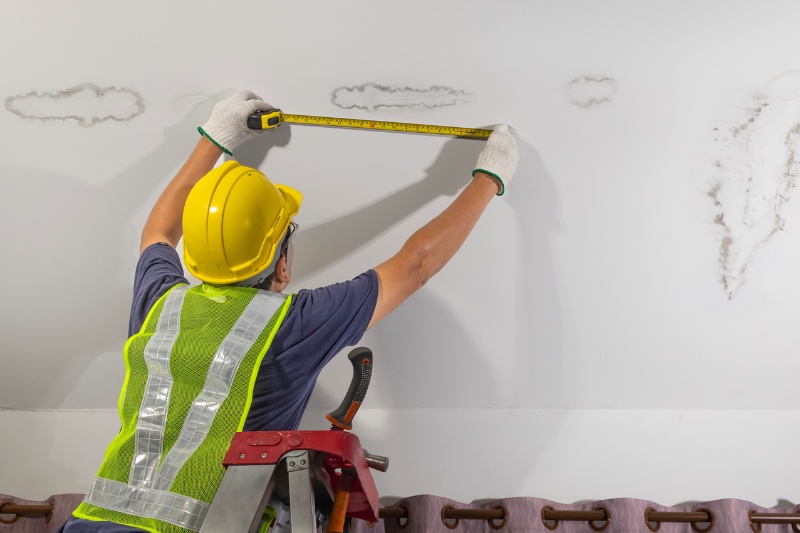
If you’ve tried the suggested solutions and are still struggling with persistent yellow ceiling stains, it might be best to seek professional help.
A qualified contractor or painter can assess the situation, recommend suitable treatments, and ensure a thorough and effective resolution to the problem.
How Do You Prevent Yellow Ceiling Stains?

To prevent unappealing yellow ceiling stains from emerging in the first place, follow these tips:
- Install proper insulation: Insulating your home properly can help regulate indoor temperatures and reduce the chances of condensation forming on your ceilings. This, in turn, can prevent yellow stains caused by moisture and humidity.
- Control humidity levels: To prevent yellow ceiling stains caused by humidity and moisture, it’s crucial to maintain appropriate humidity levels within your home. Use dehumidifiers to reduce excess moisture and improve ventilation in areas prone to high humidity, such as bathrooms and kitchens.
- Keep air circulating: Proper air circulation is crucial to controlling mould growth. Ensure that you regularly keep your doors and windows open during the day to allow fresh, clean air to flow throughout your home. Moreover, activate ceiling fans in each room where you have them to enhance air circulation within your living space.
- Bathroom ventilation: If you have a bathroom fan, ensure it’s clean and functioning. A working fan keeps the air clear while you shower. It’s essential to keep your bathroom vent clean and unclogged. Mould on your bathroom ceiling can spread through your home, settling on various surfaces, including walls, floors, and ceilings.
- Kitchen ventilation: Use an extraction fan to remove lingering smells and prevent bacteria buildup on surfaces and ceilings. Run the extraction fan regularly, ideally at least once a day, and remember to clean it often to prevent dust and bacteria buildup inside the unit.
- Use stain-resistant paint: Use stain-resistant or stain-blocking paint when repainting your ceiling. These paints are designed to prevent stains from seeping through and are especially useful if you’ve had staining issues in the past.
- Regular maintenance and inspection: Regularly inspect your ceiling and the areas above it to catch potential problems early. Check for any signs of water damage, leaks, or discolouration. Timely identification and action can prevent severe staining and further damage to your ceiling.
- Repair roof issues promptly: If the yellow stains are caused by a leaking roof, address the problem promptly. Repair any damaged roof shingles or flashing to prevent water from seeping into your home and causing further staining.
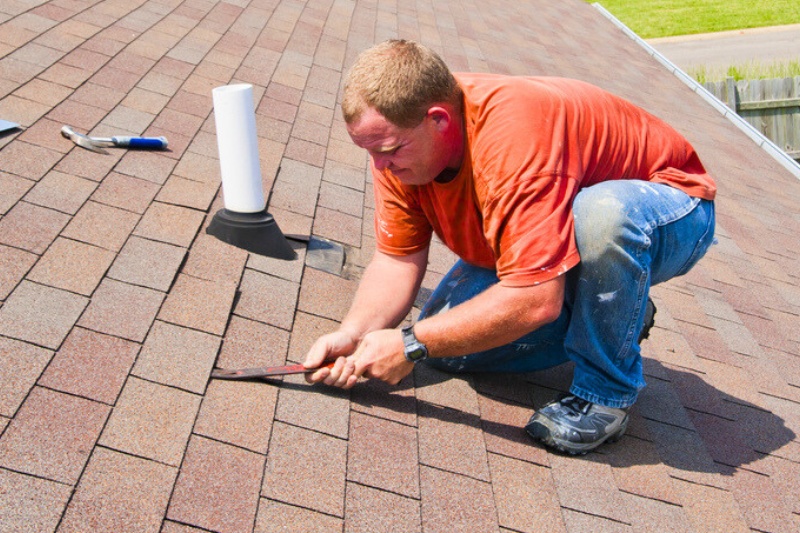

Hannah has a passion for cleaning. She worked her way around Australia by cleaning hostels in exchange for free accommodation and used her cleaning skills to bag a job as a chalet host for a luxury ski company in France.
